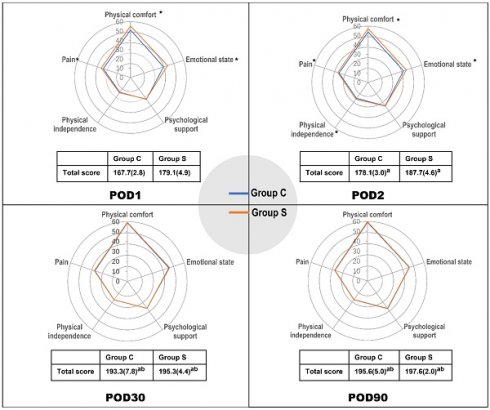3.2
Impact Factor
ISSN: 1449-1907
Int J Med Sci 2024; 21(7):1241-1249. doi:10.7150/ijms.91797 This issue Cite
Research Paper
Effect of bilateral low serratus anterior plane block on quality of recovery after trans-subxiphoid robotic thymectomy: Results of a randomized placebo-controlled trial
1. Department of Anesthesiology, Shanghai Pulmonary Hospital, School of Medicine, Tongji University, Shanghai, China.
2. Department of Emergency, Xinhua Hospital Affiliated to Shanghai Jiao Tong University School of Medicine, Shanghai, China.
3. Department of Ultrasound, 411 hospital, Shanghai University, Shanghai, China.
* These authors contributed equally to this work and should be considered co-first authors.
# These authors contributed equally to this work and should be considered co- corresponding authors.
Abstract

Purpose: This study aimed to investigate the impact of ultrasound-guided, bilateral, low level (T8-T9) deep serratus anterior plane (DSAP) blocks on postoperative recovery quality and postoperative analgesia in patients undergoing trans-subxiphoid robotic thymectomy (TRT).
Methods: 39 patients undergoing TRT were randomized to receive either low DSAP block under general anesthesia (Group S) or the sham block (Group C) on each side. The primary outcome was the QoR-40 score at postoperative day (POD) 1. Secondary outcomes included numeric rating scale (NRS) scores over time, postoperative 48 hours opioid consumption, QoR-40 scores at POD 2, 30, and 90.
Results: The QoR-40 scores on POD1-2 were higher in Group S than in Group C [179.1 (4.9) vs 167.7 (2.8), P < 0.01; 187.7 (4.6) vs 178.1 (3), P < 0.01, respectively]. Pain scores were significantly lower in Group S, both during resting and motion at postoperative 6h, 12h, and 24h (P < 0.05 for each). The total amount of sufentanil consumed in the first 48 h was lower in Group S than in Group C [61.4 (4.9) vs 78.9 (4.6), P < 0.001].
Conclusion: The bilateral low DSAP blocks enhanced the QoR-40 for 2 days postoperatively, relieved postsurgical pain, and reduced opioid consumption during the early postoperative period in patients undergoing TRT.
Keywords: Anesthesia, Local, Robot-Assisted Surgery, Thymectomy, Pain Measurement, Quality of Life

 Global reach, higher impact
Global reach, higher impact